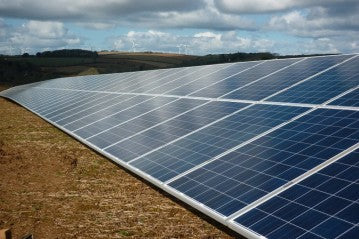
As solar energy continues to gain popularity as a clean and sustainable power source, more and more individuals are considering investing in solar systems. One crucial component of a solar setup is the solar charge controller, which ensures the optimal functioning and longevity of your system's batteries. In this blog post, we will explore the significance of grounding in solar systems, discuss how to ground a solar charge controller, address whether or not solar charge controllers need grounding, and provide some common tips for effective grounding. So, let's dive in!
What Is the Grounding of The Solar System?
Grounding is an essential aspect of electrical systems, including solar installations. The purpose of grounding is to provide a safe path for electrical currents to dissipate in the event of a fault or lightning strike. Grounding protects both equipment and individuals from the risk of electrical shock and reduces the likelihood of damage caused by surges or faults.
In a solar system, grounding involves connecting various components to an earth ground. This connection establishes a reference point for the system, allowing excess electrical energy to safely discharge into the ground.
How Do You Ground a Solar Charge Controller?
Grounding a solar charge controller is a relatively straightforward process that ensures the safety and efficiency of your solar system. Here's a step-by-step guide on how to ground a solar charge controller:
1. Identify a Suitable Grounding Location: Locate a suitable grounding spot near the charge controller. It should be accessible, dry, and securely fixed to the earth.
2. Prepare the Grounding Conductor: Using bare copper wire, cut a length sufficient to reach from the grounding point to the charge controller. Ensure that the wire size conforms to the applicable electrical code and specifications provided by the manufacturer.
3. Connect the Grounding Conductor: Strip the insulation off both ends of the copper wire. Connect one end to the grounding point and securely fasten it using an appropriate grounding clamp. Connect the other end to the grounding terminal on the solar charge controller.
4. Check Connections: Ensure that all connections are tight, secure, and free from corrosion or damage. Faulty connections can compromise the effectiveness of the grounding system.
Do Solar Charge Controllers Need Grounding?
Yes, solar charge controllers do need grounding. Grounding your solar charge controller is not only a recommended practice but also a requirement in many electrical codes and regulations. Proper grounding provides protection against electrical faults, lightning strikes, and static discharge, safeguarding your solar system and promoting safety.
What Are the Common Tips During Solar Charge Controller Grounding?
When grounding your solar charge controller, it's important to keep a few tips in mind to ensure a successful and effective grounding process. Here are some common tips to consider:
a) Use Bare Copper Wire for Grounding: Copper wire is an excellent conductor and is commonly used for grounding purposes. It is highly resistant to corrosion and provides a reliable and low-resistance path for electrical currents. Using bare copper wire ensures optimal grounding performance.
b) Ensure That the Equipment Grounding Is Connected to The System Grounding: Proper grounding requires a solid connection between the equipment grounding conductor and the system grounding conductor. This connection ensures a continuous path for electrical currents to flow to the ground, enhancing safety and system performance.
c) Understand The Grounding Process of Your Controller Depending on Your Requirements: Different solar charge controllers may have specific grounding requirements outlined in their user manuals or documentation. Familiarize yourself with these requirements to ensure compliance and maximize the effectiveness of your grounding system.
Conclusion
Grounding your solar charge controller is a critical step in the installation and maintenance of your solar system. By establishing a safe path for electrical currents, grounding helps protect your equipment, prolong the life of your batteries, and enhance the safety of your system. Remember to use bare copper wire, connect equipment grounding to system grounding, and understand the specific grounding requirements of your solar charge controller.
As you embark on your solar energy journey, prioritize safety and follow industry best practices for grounding. By doing so, you'll set the foundation for a reliable, efficient, and long-lasting solar system that harnesses the power of the sun while keeping you and your investment protected.


0 Kommentare